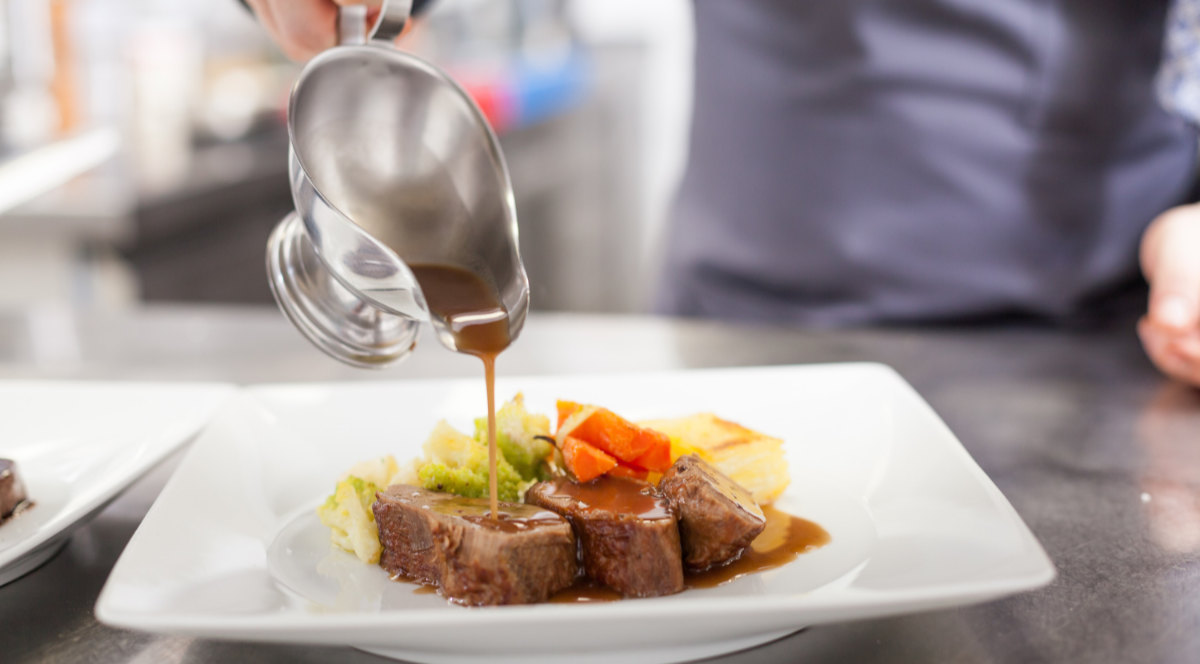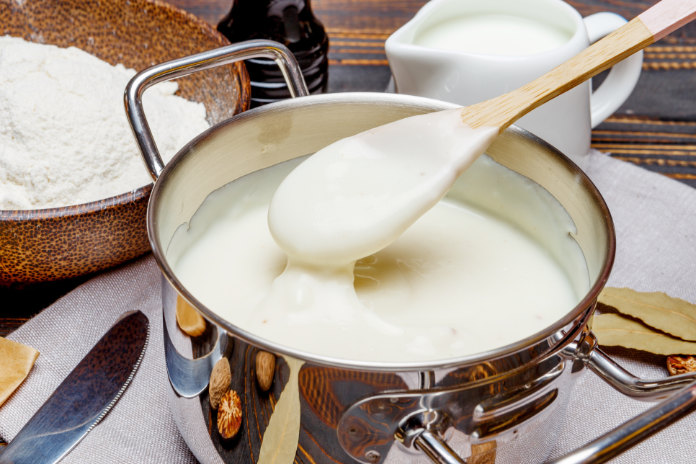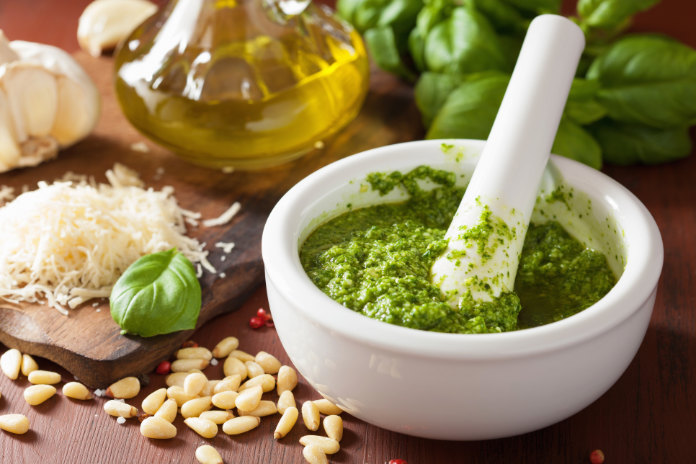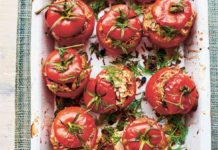Whether it’s a sweet or savoury dish, a good sauce can be the difference between success and failure in the kitchen. If the sauce is wrong, you’re guaranteed to be in trouble. And wrong could mean it’s too thin, too thick, grainy, lacking texture, lacking sheen, lacking depth of flavour, too spicy, too sour, too sickly, there’s too much of it, there’s not enough, or there’s too many variety of sauces on the plate – it’s a total minefield.
The thing is, your sauce-making ability is often seen as indicative of your overall skills as a chef.
Tips for making perfect sauces
So what do you have to look out for, and what must you always aspire to, when whipping up a sauce? Here are some tips to remember…
1. Develop a solid, but short repertoire – that way you’ll always have a sauce up your sleeve regardless of your dinner plans. Learn how to make a decent tomato sauce (for pasta, pizza, shakshuka, to serve alongside grilled fish), a creamy béchamel (for lasagne, macaroni cheese, chicken and leek pies), a classic velouté (made like a bechamel, except the milk is swapped for stock, so it can go with meat or fish dishes too, and is generally runnier and lighter), and a gravy (no, not using granules).
2. Get to grip with the basics – before attempting anything advanced, become comfortable making a roux (whisking butter with flour over heat, before adding liquid – the basis for both a béchamel and velouté). Know how to reduce your sauce until it hits the right consistency – as a general rule, a sauce that’s a happy midway between sticky and watery should do the job. Do the spoon test: a really good reduction should coat the back of a metal spoon without dripping.
3. Taste as you go – does it need more salt? More sweetness? You’ll only know if you taste along the away, and adjust accordingly.
4. Use what you’ve got – meaning, if you’re making a sauce to pair with meat (whether it’s a roast, or something more sophisticated), don’t discard the bones – the marrow will add tons of flavour.
5. Deglaze pans and roasting trays – don’t ignore the sticky bits on the bottom of the roasting pan either. Chuck in a bit of wine and some stock, whack up the heat and deglaze the bottom, stirring in all those crispy and gooey meaty bits. Then stir in a bit of flour to thicken.
6. Extract flavour – when making a seafood sauce or broth, extract as much flavour and goodness as possible by chucking any shells into your stock base too – just strain before serving.
7. Keep it simple – sauces needn’t be complicated. Pesto counts, even though all that’s involved in making one is a handful of basil whizzed up with pine nuts, olive oil and a spritz of lemon.
8. Don’t get carried away – aiming for a fine dining look? Don’t smear your sauce across the plate, or ‘paint’ it on with a brush. Only modernist food masters can get away with it, it just looks messy at home.
9. Add finishing touches – to add gloss to a sauce, throw in a knob or two of butter at the end and stir through. And when it comes to pasta sauces, always pour in a cup of the pasta cooking liquid and whisk in just before serving, it’ll add body, thicken it up and bring everything together (i.e. emulsify your sauce).
10. Make plenty! – there’s nothing worse than not having enough sauce (just remember all the arguments you’ve had over the gravy boat at Sunday lunches past). Make sure there’s loads to go around – serve some directly on the plate, then have a big jug of it in reserve to hand round the table. Especially if it’s a chocolate sauce you’re dealing with.


































































